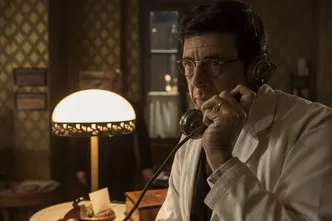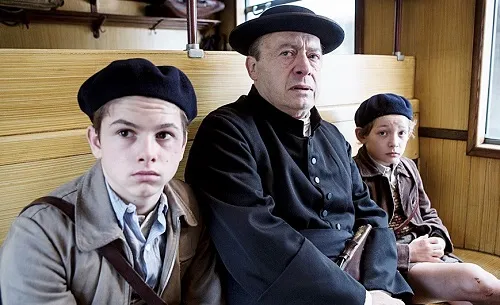
A Bag of Marbles is based on the autobiographical novel of the same title by the French writer Joseph Joffo, published in 1973, of which there have been countless editions in various languages, having been a publishing phenomenon, since more than twenty have been sold. millions of copies. In addition, a graphic edition with vignettes was later printed. The first film adaptation was made in 1975 by Jacques Doillon; The current version is a remake of this one.
Historical background. Without intending to be exhaustive, it is not bad to make a brief historical review, to put the film “A Bag of Marbles” in context and to make it more understandable. After the outbreak of World War II in 1939, France was invaded by Hitler's troops in 1940, and its capital, Paris, was also occupied. The invaders, after suppressing the French Third Republic, established a new collaborationist regime with the Nazi regime, which will be headed by General Pétain. While the Deputy Minister of War, Charles de Gaulle flees to the United Kingdom. The occupied zone includes the northern and central strip of France, leaving a free zone in the south, being the natural exit to the Mediterranean. While a small strip to the southeast was occupied by Mussolini's Italians, including the city of Nice, where the situation could worsen at any moment, depending on the evolution of the war.

In this historical context takes place the plot of A Bag of Marbles, the true story of Joseph, the 10-year-old boy, which will later be captured in the book “Un sac de billes”. A disturbing story of two children who have to leave their family home to escape Nazi persecution.

Paris, 1941. The city was still occupied by German troops from the previous year. While the SS walk through the streets, behind the scenes, the repression against the Jews has already begun.


Joffo is an honest Jew, son of a Russian exile who fled Tsarist Russia, owner of a hair salon in Paris. After years of practicing his profession with total normality, the situation begins to get complicated, with his family having to wear the yellow star, a distinctive mark that marked them as Jews. While the children, oblivious to the real situation, play in the streets..., in a hidden corner there still survives an old sign with the motto of the extinct French Republic, "Liberté, Égalité, Fraternité", a true paradox. Joseph, the little brother of the family, barters with his friend Zérati; He exchanges the badge that marks him as a Jew in exchange for a sack of marbles.


Joffo, seeing the worsening situation in Paris, and after being expelled from his home, devises an ingenious and risky plan to get the six members of his family to safety.

Joseph and his brother Maurice, aged ten and twelve, must leave Paris on a different path than their parents and older brothers. Alone they will head towards the southern demilitarized zone, following the plan devised by their father.

After many hardships, after being harassed by German soldiers and on the verge of being arrested and deported, they manage to reach the free zone; The Mediterranean was already before their surprised eyes.

The next step to take is to meet with their parents and siblings, who are supposedly waiting for them in Nice, a city that was occupied by Mussolini's Italian troops, Hitler's allies.
thank you for your support my brothers
Posted Using InLeo Alpha